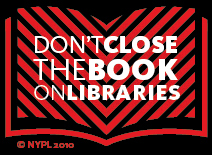As someone who is heavily involved with the self-publishing scene, I am constantly trying to learn more about it. I'm always looking for solutions to problems I've had in the past and attempting to find the best possible way to produce my literary journal, Leaves & Flowers.
Self-publishing is an intense process for the writers who take it seriously. And these are the people I want to focus on.
Serious Self-Publishers
The people who are serious about self-publishing are the ones who are going to succeed.
Garrison Keillor -and anyone who knocks on self-publishing as a whole -assume that writers who self-publish simply find the first ebook website they can, slap an unpolished manuscript up onto it and flood the market with crap that nobody wants. That's simply not how it works.
The people who are serious about their writing -people who have written a number of books, perhaps published in the traditional way, have a degree in something related to writing, or are dedicated to and in love with their craft -are not going to just throw their novel up on a website without any planning.
While self-publishing and traditional publishing both have their challenges, self-publishing is just as difficult as going the "normal" route, and it has very unique challenges. The writer becomes much more than just a writer:
- Editing falls on the writer's shoulders, unless she is willing to pay someone hundreds or even thousands of dollars for a professional edit. Many writers do opt for this, because a polished manuscript is essential for sales.
- Designing the interior and exterior is also the writer's responsibility. For writers with no design experience, this can be a huge challenge as they experiment with different formats. The cover is one of the most important parts of selling a book online, because people do judge books by their cover -we all know it. Again, many writers choose to hire someone to do the designing for them, which is very expensive.
- Finding a printer is the writer's responsibility. A self-publishing author cannot simply hand the manuscript over to a publisher and know that the publisher owns or works with a printing press. The writer must seek out the best quality printer -and sometimes reformat a book to fit their specifications. Printing self-published books is expensive, especially if you order multiple proof copies (for example: I ended up needing three separate proofs of the latest issue of Leaves & Flowers; each one cost me $15. $45 for one issue is a huge amount of money to a broke college student -for a professional writer, that number could rapidly get much, much larger).
- Marketing and publicity are the responsibility of a writer. Many traditionally published writers are involved with their publicity -and many receive none at all -but in self-publishing, the risks are much greater. All of the marketing experience available to big publishers is unavailable to self-published authors, who are often working totally alone, promoting their books on Twitter, Facebook and other websites in order to create a fan base.
- Self-published writers receive no advances, have no agents and often lack experience in the publishing field. It is a steep, steep learning curve.
Those of us who choose to self-publish are not always in it because the manuscript "wasn't good enough" for a big publisher. And if it wasn't, it won't sell. Self-publishing, like traditional publishing, is a market. People who learn how to work the market effectively are going to succeed. They might not have a breakaway best-seller or a New York Times Book Review (yet!), but that's because this is a new market. It's just learning how to walk. Give it a few years, and it will be running faster than you can imagine.
I love it when I see authors who are willing to take the plunge and self-publish. It's risky, it's ballsy and it is more likely to fail. But it is also the up-and-comer, the next big thing. Getting in on it now and learning the ropes is an investment. Self-publishing is riding the new technology of ebooks and ereaders and the influx of self-publishing outlets in a way that the industry doesn't understand. And in the end, that's going to be their loss.
A Community of Writers
Those of us who self-publish form a very tight-knit community. People are more willing to interact, buy each others' books, promote one another and make friends. We play well with others, because taking the route of self-publishing requires you to engage with your community. Self-published authors can be cranky, argumentative and bitter, just like anybody, but on the whole, we are driven to help one another.
Traditionally published authors have a similar community, I'm sure, but it's always inspiring to me to see how much self-publishing authors are willing to do for one another. Building a fan base is part of succeeding, but it goes far beyond that in the self-publishing world: these writers build a community, too.
Conclusion
I have nattered on long enough for now. Self-publishing is a force to be reckoned with. It's like fire: if you learn how to use it and control it, you can make art. If you're just playing with it, which Garrison Keillor and his ilk assume is all we know how to do, you can be eaten alive. It's a challenge, and it's one that any serious writer should consider taking on.


Finding a printer for a self-published book is not difficult. Many page sizes are available, and various bindings. Most self-publishers (and "self-publishing companies") use Lightning Source. Within a few days after approving a proof, books will be on sale on Amazon.com and many other online booksellers. They can also ordered by terrestrial booksellers.
ReplyDeleteMichael N. Marcus
-- Independent Self-Publishers Alliance, http://www.independentselfpublishers.org
-- "Become a Real Self-Publisher: Don’t be a Victim of a Vanity Press" http://www.amazon.com/dp/0981661742
-- "Stories I'd Tell My Children (but maybe not until they're adults)" http://www.amazon.com/dp/0981661750
-- http://www.BookMakingBlog.blogspot.com
-- http://www.SilverSandsBooks.com